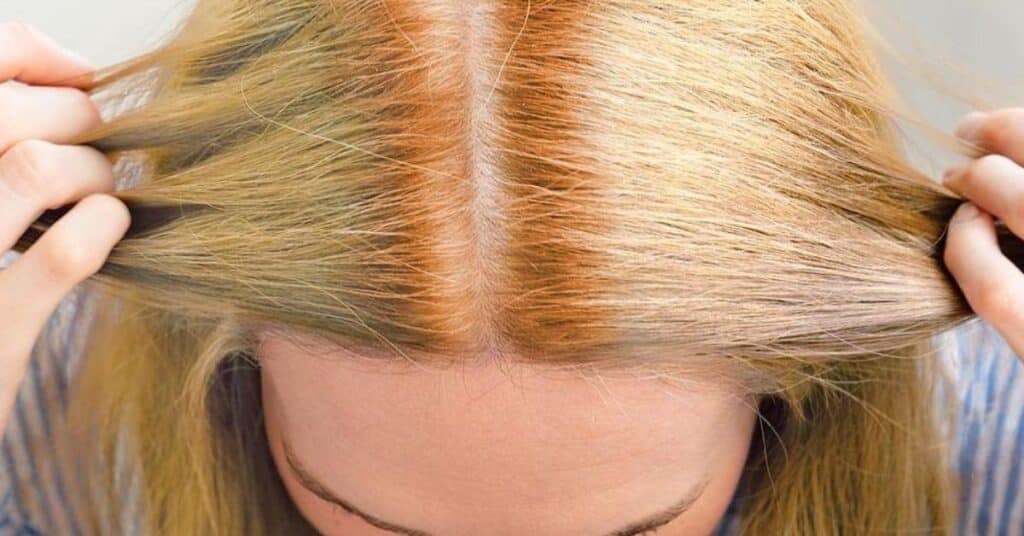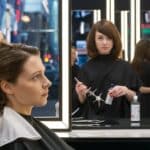To fix orange hair after bleaching several methods can effectively neutralize or adjust the unwanted tone. Purple or blue shampoo can counteract the orange hues by depositing cool tones.
Hair glazes or glossing colors can add depth and tone correction. Dyeing your hair darker can cover the orange completely. Professional salon treatments offer precise color correction. An apple cider vinegar toning rinse can help balance pH levels and reduce brassiness. Preventing orange hair involves careful bleach application and regular toning maintenance.
Why has my hair turned orange?

Hair can turn orange due to several reasons. Most commonly associated with the process of bleaching. When hair is bleached, especially if it is dark, it goes through various color stages before reaching the desired shade. During this process, the underlying pigments in the hair, particularly red and orange tones, become exposed. If the bleaching process isn’t controlled properly or if the hair isn’t lightened sufficiently, these underlying pigments can manifest as an orange hue.
Environmental factors such as exposure to sunlight or harsh water minerals can contribute to hair turning orange. Sun exposure can cause hair color to fade and shift towards warmer tones, including orange. Minerals in water such as iron can oxidize and create a rusty or brassy tint in the hair, especially for those with lighter shades or bleached hair.
Read this blog: Unraveling The Truth: Is Bianca Belair’s Hair Real?
How to fix orange hair
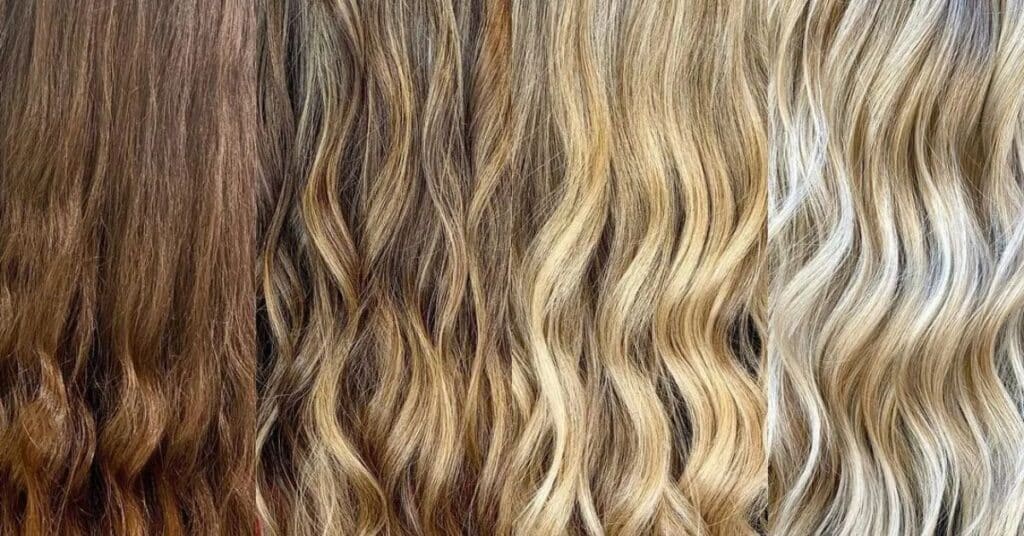
Fixing orange hair involves several straightforward methods to neutralize or adjust the unwanted hue. One effective approach is to use a purple or blue shampoo, which helps counteract the orange tones by depositing cool pigments onto the hair strands. Applying a hair glaze or glossing color can also be beneficial as it adds depth and tone correction, helping to balance out the orange hue.
Another option is to dye your hair darker, which covers the orange tones completely by adding a richer color on top. If the orange hair issue persists, seeking professional assistance at a salon for precise color correction is advisable. Using an apple cider vinegar toning rinse can help balance pH levels in the hair and reduce brassiness contributing to a more balanced and natural-looking hair color. These methods offer effective solutions for fixing orange hair and restoring a desired hair color.
Home Tips For Hairs
Coconut Oil Mask: Apply coconut oil to hair and scalp as a moisturizing mask, leaving it on for 30 minutes before washing out with shampoo.
Apple Cider Vinegar Rinse: Dilute apple cider vinegar with water and use as a final rinse to balance scalp pH and add shine.
Egg Mask: Beat an egg and apply to damp hair for 20 minutes to strengthen and nourish with protein.
Avocado Hair Mask: Mix mashed avocado with olive oil, apply to damp hair for 30 minutes to moisturize and add vitamins.
Silk Pillowcase: Switch to a silk pillowcase to reduce hair breakage and frizz while sleeping, maintaining hair health.
Why Does Hair Turn Orange After Bleaching?
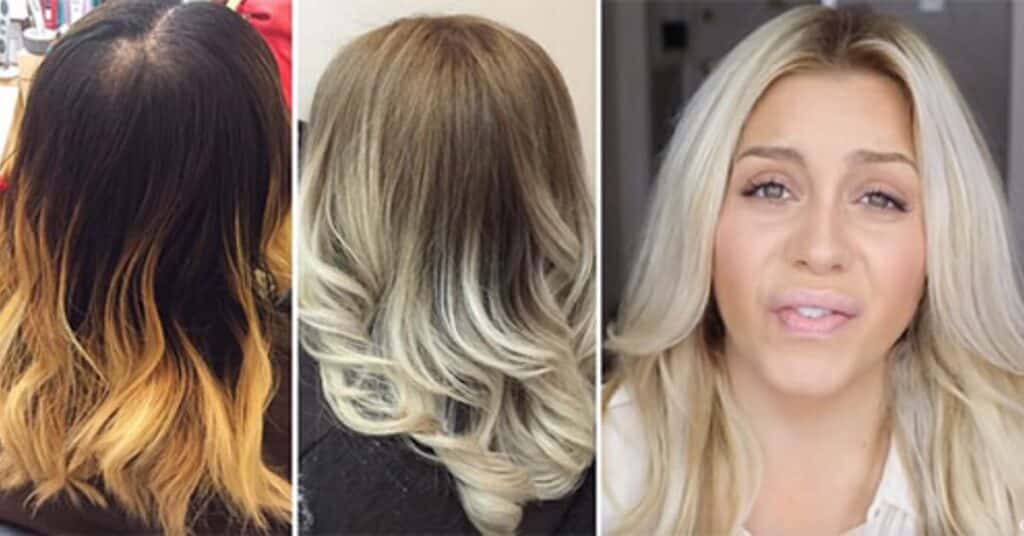
Hair turns orange after bleaching primarily due to the process of oxidation and the exposure of underlying pigments. When hair is bleached, especially if it’s naturally dark, it undergoes a series of color transformations. During this process, the bleach lifts the natural pigment from the hair strands, exposing underlying tones, including red and orange hues. If the bleaching process isn’t controlled properly or if the hair isn’t lightened sufficiently, these underlying pigments become more pronounced, resulting in an orange appearance.
The orange tone can also be attributed to the levels of melanin present in the hair. Darker hair contains more melanin, which leads to a higher concentration of red and orange pigments. As the bleach lifts the melanin from the hair, these pigments become more visible, causing the hair to appear orange. Factors such as the hair’s porosity, the strength of the bleach used, and the duration of the bleaching process can all influence the extent to which the hair turns orange after bleaching.
Also Read this blog: Shoot For Style: How To Get A Kevin Durant Haircut
Use a Purple or Blue Shampoo
Using a purple or blue shampoo is an effective way to counteract orange tones in the hair. These shampoos contain pigments that are opposite to orange on the color wheel, which helps neutralize the unwanted orange hue. When applied regularly, the purple or blue pigments deposit onto the hair strands, toning down the orange and leaving behind cooler, more balanced tones.
To use a purple or blue shampoo, simply apply it to wet hair, focusing on areas where the orange tones are most prominent. Leave the shampoo on for a few minutes to allow the pigments to penetrate the hair shaft and neutralize the orange. Then, rinse thoroughly and follow up with a conditioner. Using this type of shampoo regularly can help maintain a more desirable hair color and prevent the recurrence of orange tones.
Use a Hair Glaze or Glossing Colour
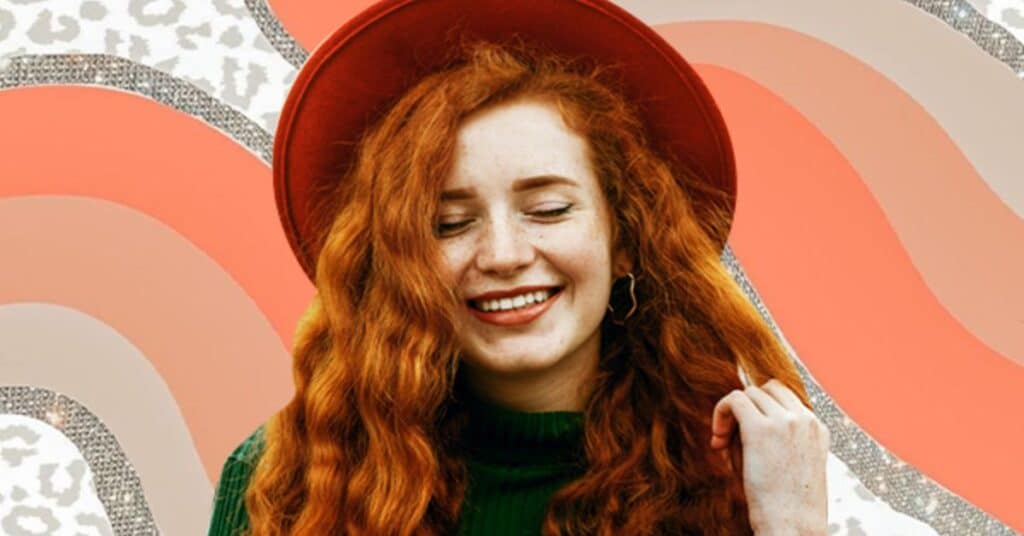
Using a purple or blue shampoo is an effective way to counteract orange tones in the hair. These shampoos contain pigments that are opposite to orange on the color wheel, which helps neutralize the unwanted orange hue. When applied regularly, the purple or blue pigments deposit onto the hair strands, toning down the orange and leaving behind cooler, more balanced tones.
To use a purple or blue shampoo, simply apply it to wet hair, focusing on areas where the orange tones are most prominent. Leave the shampoo on for a few minutes to allow the pigments to penetrate the hair shaft and neutralize the orange. Then, rinse thoroughly and follow up with a conditioner. Using this type of shampoo regularly can help maintain a more desirable hair color and prevent the recurrence of orange tones.
Dye Your Hair Darker
Dyeing your hair darker is a straightforward solution to fix orange tones. By choosing a hair dye that is darker than the current shade of your hair, you can effectively cover up the orange hues and achieve a richer, more uniform color. Darker hair dyes contain pigments that can easily conceal the underlying orange tones, providing a solution for those who want to eliminate the unwanted color.
To dye your hair darker, select a hair dye in a shade that is one or two levels darker than your current hair color. Follow the instructions provided with the hair dye carefully, ensuring proper application and processing time. Once the dye is applied and rinsed out, you’ll notice that the orange tones have been effectively masked, leaving you with a darker and more even hair color. This method offers a quick and effective way to fix orange hair and achieve the desired look.
Use an Apple Cider Vinegar Toning Rinse
Lighten Your Orange Hair at the Salon Visiting a salon to lighten your orange hair can be a reliable solution for those who want professional assistance. Hair stylists have access to a variety of products and techniques specifically designed to lighten hair and correct unwanted tones. They can assess the current condition of your hair and determine the best approach to achieve the desired result, whether it involves additional bleaching, color balancing, or toning.
During the salon appointment, your stylist may use bleach or lightening products to lift the orange pigment from your hair strands. They will carefully monitor the process to ensure that your hair lightens evenly and safely. They may apply toners or color-correcting treatments to neutralize any remaining orange tones and achieve a more balanced and desirable hair color. Seeking professional help at the salon offers a tailored solution to lighten orange hair effectively while minimizing the risk of damage.
How to Prevent Orange Hair
Preventing orange hair begins with proper hair bleaching techniques. Ensure that the bleaching process is carried out carefully and evenly to avoid uneven lifting of pigments, which can lead to orange tones. It’s essential to follow the instructions provided with the bleach and to monitor the hair closely during the bleaching process to achieve the desired level of lightness without excessive exposure to underlying pigments.
Regular toning maintenance is crucial for preventing orange hair. Using purple or blue toning shampoos and conditioners can help neutralize any underlying warm tones, including orange, and maintain a cooler hair color. Scheduling regular salon visits for professional toning treatments can provide more targeted and effective color correction. By taking proactive measures to maintain hair color and using appropriate toning products, you can minimize the risk of developing orange tones and keep your hair looking vibrant and balanced.
Frequently Asked Question
How can I fix orange hair after bleaching at home?
You can fix orange hair after bleaching at home using various methods.
What is the best way to neutralize orange tones in bleached hair?
One effective method is to use a purple or blue shampoo, as these colors are opposite orange on the color wheel, neutralizing the unwanted tones.
Can I use household ingredients to tone down orange hair?
Yes, you can create homemade hair masks using ingredients like coconut oil, apple cider vinegar, or eggs, which can help moisturize the hair and reduce brassiness.
Is it possible to darken orange hair at home?
Yes, dyeing your hair a darker shade can cover up the orange tones effectively. Choose a hair dye that is darker than your current hair color for the best results.
How can I maintain my hair color after fixing orange tones at home?
To maintain your hair color, use color-safe shampoos and conditioners, avoid excessive heat styling, and schedule regular touch-ups or toning treatments as needed.
Final Thoughts
Addressing orange hair after bleaching can be effectively achieved through various at-home methods, providing convenience and affordability. Utilizing purple or blue shampoos to neutralize unwanted tones or opting for homemade masks using household ingredients, there are accessible solutions to tackle this common issue. The darker hair dyes offer a straightforward approach to cover orange hues entirely, while maintaining hair health through proper care and maintenance routines ensures long-lasting results.
At home remedies can be effective, it is important to exercise caution and monitor the hair’s condition to avoid potential damage. Seeking professional assistance from a salon is advisable for more complex color correction needs or for those with concerns about DIY methods. Combining at home care with occasional salon visits, individuals can achieve and maintain their desired hair color, restoring confidence and vibrancy to their locks.


